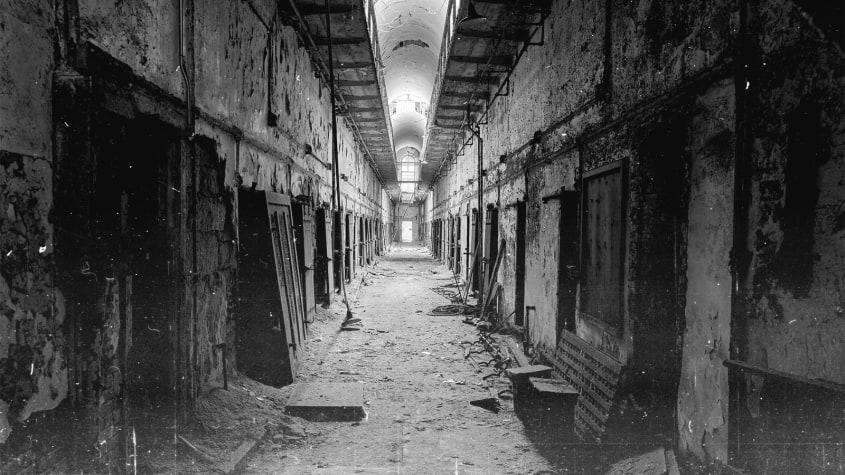The American prison system is the haunted house of tomorrow

- Oops!Something went wrong.Please try again later.
If you believe the stories — and I'm not entirely sure I don't — America is very, very, very haunted.
We have haunted houses and haunted hotels, haunted courthouses and haunted cemeteries, haunted theaters, haunted restaurants, haunted bridges, haunted boats, and even entire haunted towns. Colin Dickey, author of Ghostland: An American History in Haunted Places, points out an obvious reason this country's dead are so unsettled: "There's precious little land in the United States that hasn't been contested, one way or another, through the years," he writes, alluding to the genocide of the continent's Indigenous peoples, a skeleton in our national closet. "Americans live on haunted land because we have no other choice."
But if ghost-infested suburbia is a phantasmic reflection of our nation's historic sins, another Halloween trope reflects an ongoing evil: the haunted prison.
Whether it's the Eastern State Penitentiary in Philadelphia, the Ohio State Reformatory in Mansfield, or Alcatraz in San Francisco, every old, still-standing prison seems to have enough ghost stories to fill an entire season of TV for the Travel Channel. The reason is simple: These facilities were notorious for brutal and inhumane treatment of their inmates.
The Eastern State Penitentiary used "harsh punishments" that were "enough to make you shiver even without seeing a ghost," NPR writes, describing horrors with names like "the mad chair," "the Hole," and "the iron gag." Over 200 prisoners died of disease and neglect, murder, or suicide while incarcerated at the Ohio State Reformatory, the prison from The Shawshank Redemption. Alcatraz was so dark, damp, and hopeless it was already considered haunted while still in use.
Many of these prisons now exploit the historic abuse of incarcerated people with seasonal ghost tours. But what's really chilling is that these horrors don't belong to some distant past: Alcatraz only closed in 1963, the Eastern State Penitentiary in 1971, and the Ohio State Reformatory in 1990. Abuse of the incarcerated isn't a hoary ghost story; it's real and it continues.
Where, then, will we hold the ghost tours of tomorrow? If New York City's Rikers Island ever closes, will there one day be tour guides talking about prison conditions as barbaric as "the mad chair?" Will our immigration detention centers one day sell tickets to spooktacular Halloween celebrations? Will teenagers one day shudder closer together in one of the dark federal prisons where more than 2,700 people died of COVID-19?
"Americans live on haunted land because we have no other choice" wrote Dickey of our phantom infestation in Ghostland. Only, with prisons, we do: We can choose to care well for incarcerated people while they're still with us.
You may also like
Biden is still acting like the 'senator from Obama'
5 riotously funny cartoons about Steve Bannon's contempt of Congress charge

